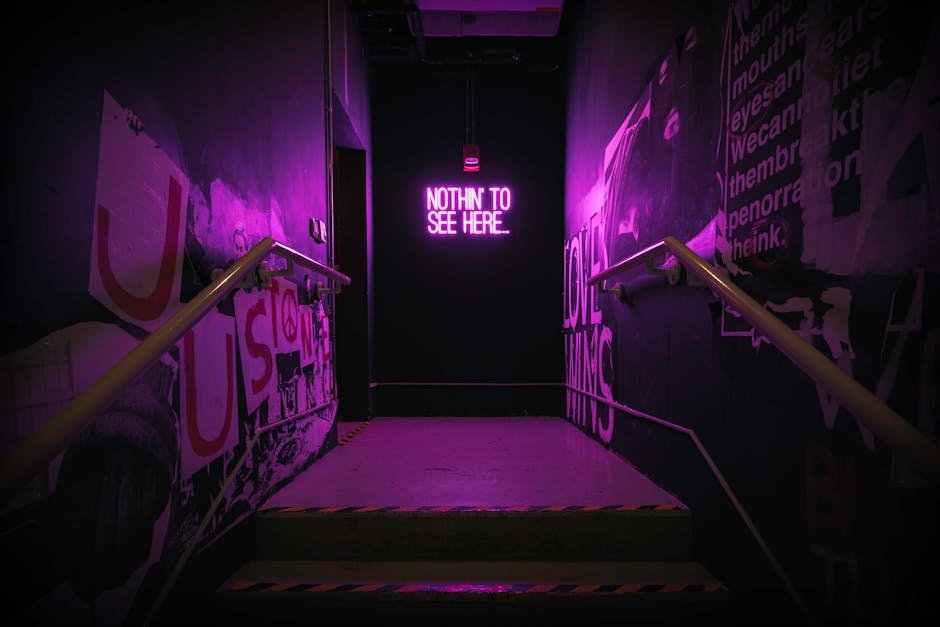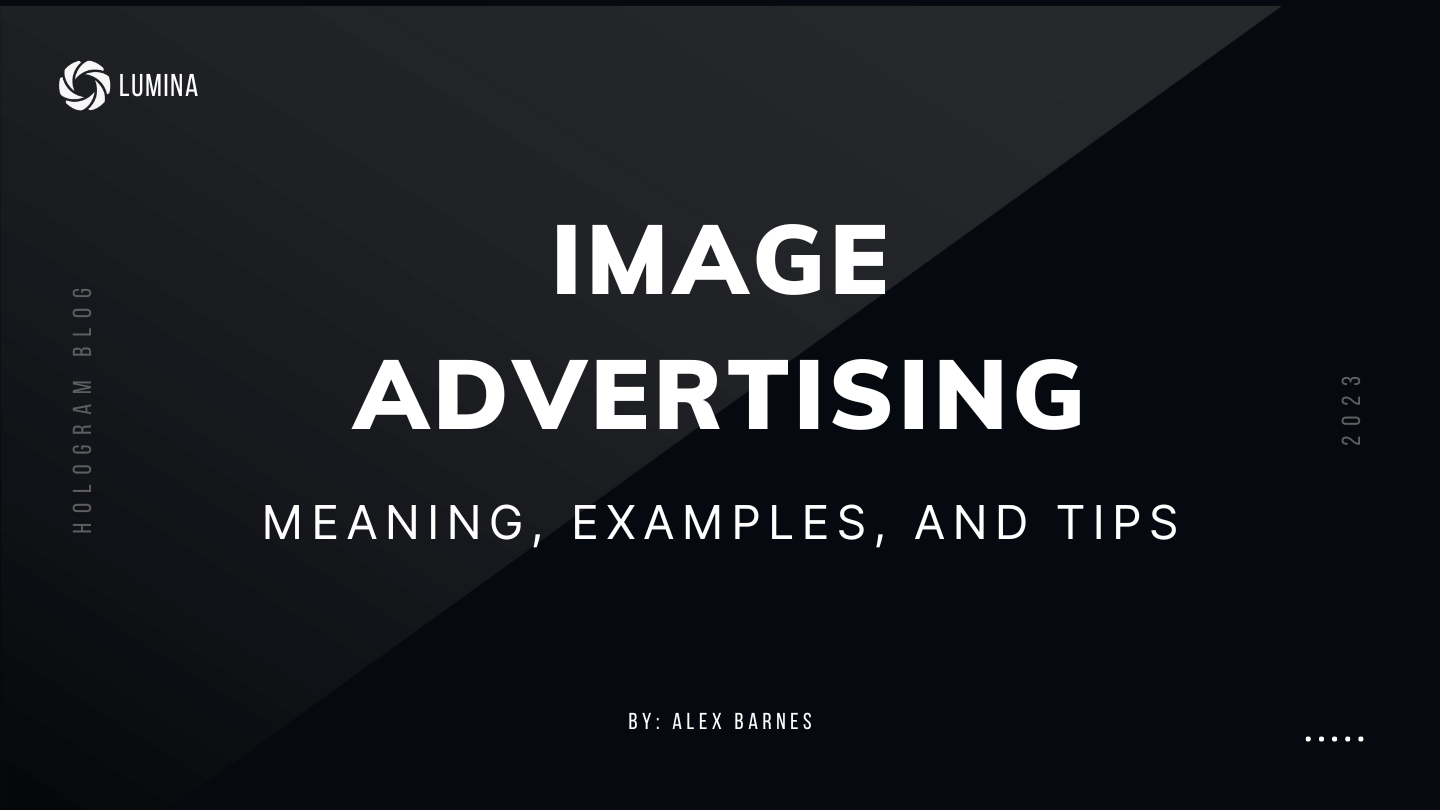Quick Facts about Image Advertising:
- Purpose: Build brand image and emotional connections.
- Method: Use of visuals, stories, and emotional appeal.
- Outcome: Enhanced brand recognition and loyalty.
Are you struggling to make your brand stand out in a digital world crowded with content? In today’s digital marketing arena, capturing the attention of your audience is more challenging than ever. That's where image advertising comes into play.
Image advertising is not just about advertising a product or service directly; it's about shaping how people perceive your brand. It leverages striking visuals and compelling stories to create a positive brand image and forge an emotional connection with the audience. Why does this matter? Because in a world where consumers are bombarded with countless choices, having a strong, positive brand image can be the difference between being remembered and being overlooked.
Image advertising taps into the power of visuals to make your brand more memorable, appealing, and trustworthy. It goes beyond traditional advertising by building a story around your brand, making it a part of the customer's life. This approach is essential in digital marketing, where visual content rules and consumer attention is fleeting.

As we dive deeper into image advertising, remember: it’s about more than just selling a product or service. It's about creating a brand that people love, trust, and remember—even when they're not actively looking to buy.
What is Image Advertising?
Graphic Promotion, Business Visibility, Website Traffic
At its core, image advertising is about painting your brand in the best light possible. It's not just about pushing a product or service onto the consumer; it's about weaving a narrative that places your brand in their hearts and minds. This kind of advertising uses strong visuals and emotional storytelling to build a positive perception of your brand, making it memorable.
Why Focus on Image?
Imagine walking down a busy street, your mind buzzing with the day's concerns. Then, out of the corner of your eye, you catch a stunning, colorful billboard. It's for a brand you've heard of, but this time, the image stays with you. That's image advertising at work. It cuts through the noise, leaving a lasting impression.
-
Graphic Promotion: This involves the use of images, videos, and other visual elements to tell your brand's story. The goal is not directly selling but creating an image that resonates with viewers.
-
Business Visibility: In a digital world cluttered with ads, standing out is crucial. Image advertising boosts your visibility, making sure your brand is seen and remembered.
-
Website Traffic: While the primary goal may not be immediate sales, effective image advertising drives curiosity and leads people to seek out your brand, increasing website traffic.
How Do We Do It at Lumina?
We specialize in bringing your brand's story to life through captivating visual displays. Our holographic fans and 3D LED displays are not just tools; they are canvases for your brand's narrative. Here's how we make image advertising work for you:
-
Captivating Visuals: With our technology, your ads are transformed into mesmerizing visual experiences that grab attention and don't let go.
-
Emotional Connection: We believe in the power of storytelling. By combining your brand's message with our visual innovations, we create emotional connections that last.
-
Engagement Boost: Our displays are designed to not just attract but also engage. They're conversation starters, encouraging people to stop, watch, and share.
- Driving Traffic: The intrigue and engagement don't end with the display. They extend to increased online interest, driving more visitors to your website and social media platforms.
In the era of information overload, image advertising stands out as a beacon. It's not just about telling people what you sell; it's about showing them who you are. Through strategic use of visuals and emotional appeal, we help you create a lasting image—one that brings your brand to the forefront of people's minds, even when they're not actively looking to buy.
In advertising, an image isn't just a picture. It's a powerful tool that, when used correctly, can elevate your brand to new heights. At Lumina, we're here to help you harness that power.
Examples of Effective Image Advertising
The power of visual content can't be overstated. Platforms like Pinterest, Instagram, Tumblr, and Snapchat have mastered the art of image advertising, making them excellent examples for any brand looking to boost engagement and visibility. Here's how these platforms can be used effectively:
- Idea Boards: Create boards that showcase your products in action. For instance, if you sell kitchenware, create a board filled with recipes where your products are used.
- How-to Guides: Pin step-by-step guides that require your product, indirectly promoting its usefulness.
- Stories and Posts: Use high-quality images of your products in real-life settings. The more relatable, the better. Instagram Stories, with features like polls and questions, can also drive direct engagement.
- Influencer Collaborations: Partner with influencers to showcase your product. Their endorsement can significantly boost your product's visibility and desirability.
Tumblr
- Themed Blogs: Create a Tumblr page dedicated to the lifestyle your brand promotes. Regularly update it with visually appealing posts that subtly include your products.
- Community Interaction: Engage with users by reblogging their content or responding to comments. This builds a community around your brand.
Snapchat
- Behind-the-Scenes Content: Give your audience a peek behind the curtain. Showing how your products are made or a day in the life at your company can build a personal connection.
- Limited-Time Offers: Use Snapchat's ephemeral nature to your advantage by posting limited-time offers or flash sales. The urgency can drive quick action.
User Engagement is the common thread across all these platforms. By creating content that resonates with your audience, you encourage them to interact with your brand, whether it's through likes, shares, comments, or direct engagement through polls and questions.
Visual Content is your best ally in image advertising. A compelling image can convey your brand's message more effectively than a thousand words. Whether it's a breathtaking photo of your product or a creative infographic that explains its benefits, visual content grabs attention and leaves a lasting impression.
At Lumina, we understand the importance of standing out in a crowded market. Our holographic fans and 3D LED displays are designed to take your visual content to the next level, ensuring your brand not only captures but also holds the audience's attention at trade shows, events, and in retail environments.
Effective image advertising isn't just about showcasing your products; it's about telling a story that resonates with your audience. It's about creating a visual experience that connects on an emotional level, encouraging engagement, and building a lasting relationship with your brand.
Benefits of Image Advertising
Demographic Reach
One of the biggest strengths of image advertising is its ability to connect with a broad audience. Regardless of age, gender, or interests, a well-crafted image can capture attention and convey a message universally. This is especially useful in today's diverse market, where appealing to different demographic groups is essential for brand growth.
Design Appreciation
In a world bombarded with information, a visually appealing ad can be a breath of fresh air. Image advertising allows us to tap into the appreciation for good design, making your brand memorable. A stunning, thoughtfully designed image not only draws the eye but also enhances the perceived value of your brand and products. It's not just about looking good; it's about creating a visual identity that people can connect with and remember.
Increased Engagement
Images are processed by the brain much faster than text, making image advertising a powerful tool to increase engagement. A compelling image can stop a viewer in their tracks, encouraging them to explore more about the brand or product. This immediate engagement is crucial in the digital age, where attention spans are short, and competition for eyes is fierce.
By leveraging platforms like Instagram and Pinterest, we can transform passive viewers into active participants, sharing and interacting with our content. This not only increases the visibility of our brand but also fosters a community of loyal followers and potential customers.
In Practice
At Lumina, we understand the power of image advertising in creating connections and driving engagement. Our holographic fans and 3D LED displays are designed to make your brand stand out in crowded spaces like trade shows and retail environments. By creating eye-catching, dynamic visuals, we help you capture the attention of your audience, making your message not just seen, but felt.
Through image advertising, we aim to not just increase the reach of your brand, but also to deepen the connection with your audience, making your brand a memorable part of their lives. Whether it's through stunning holographic displays or compelling social media content, the goal is always the same: to leave a lasting impression that drives engagement and loyalty.
In conclusion, the benefits of image advertising are clear: wider reach, appreciation for design, and increased engagement. By incorporating these elements into your marketing strategy, you can elevate your brand's visibility and connect with your audience on a deeper level.
How Image Advertising Works
In marketing, making your brand stand out is crucial. That's where image advertising steps in. It's not just about showing off a product or service; it's about crafting a story that resonates with your audience, creating a lasting image in their minds. Let's dive into how image advertising works, focusing on IMG Advertising and the power of leveraging global sports, culture, and brand assets.
IMG Advertising: A Case Study in Brand Leverage
IMG is not just a company; it's a global powerhouse in sports and culture. They understand that the value of a brand lies not just in its products but in the emotions and connections it can foster with its audience. Here’s how they, and by extension, image advertising, make magic happen:
- Leveraging Assets: IMG works with a variety of properties, from sports teams to cultural festivals. They use these assets to create compelling narratives around their partners' brands, tapping into the existing fan base and creating new enthusiasts.
- Creating Connections: By associating brands with beloved sports teams or cultural icons, IMG creates a bond between the brand and the consumer. This emotional connection is the cornerstone of image advertising, making brands feel like a friend or a part of the consumer’s life.
- Global Reach: With operations around the world, IMG showcases how image advertising transcends borders. A brand associated with a global event or a universally admired sports figure can gain recognition and appreciation from a worldwide audience.
Implementing Image Advertising in Your Strategy
Now, how can you, as a retail industry professional, use the principles of IMG Advertising and image advertising to stand out?
- Find Your Unique Story: Every brand has something that makes it special. Identify that unique selling proposition and weave it into a narrative. Whether it's your history, your commitment to sustainability, or your innovative products, let that story shine.
- Leverage Cultural Moments: Align your advertising efforts with cultural events, sports, or movements that resonate with your target audience. This could mean creating special promotions for these events or showing your support for a cause.
- Utilize Striking Visuals: At Lumina, we believe in the power of eye-catching visuals. Using our holographic fans and 3D LED displays, you can create mesmerizing image advertisements that capture the essence of your brand and leave a lasting impression at trade shows, events, and in-store.
- Engage Across Platforms: Don’t limit your image advertising to one medium. Use social media, your website, and physical advertising spaces to tell your story consistently and compellingly.
- Measure and Adapt: Finally, keep track of how your image advertising efforts are performing. Use metrics like engagement rates, website traffic, and sales data to understand what's working and what's not. Then, be ready to adapt your strategy accordingly.
By following these steps and embracing the principles behind IMG Advertising, you can leverage the intrinsic value in your brand's assets, connect with your audience on a deeper level, and stand out in the crowded retail market. Image advertising is about more than just visibility; it's about creating a bond with your audience that goes beyond the transactional.
Implementing Image Advertising in Your Strategy
In the bustling world of retail and events, standing out is more than just a goal—it's a necessity. With image advertising, you have the power to not only capture attention but also to forge memorable connections with your audience. Here's how you can implement this strategy effectively, focusing on design, print, install, vehicle wraps, apparel, signage, and graphic design.
Design
Start with a bold vision. Your design should tell a story that resonates with your target audience, embodying your brand’s values and aspirations. Whether it's for a holographic display or a new line of branded apparel, the design is the foundation of your image advertising strategy. Work with designers who understand your market and can translate your ideas into compelling visual narratives.
High-quality print materials are essential for making a lasting impression. From brochures to banners, the quality of your print assets reflects the quality of your brand. We recommend using vibrant colors and high-resolution images to ensure your print materials grab attention and communicate your message clearly.
Install
Installation plays a crucial role, especially in physical advertising assets like signage and vehicle wraps. Proper installation ensures your advertisements look professional and are positioned for maximum visibility. Whether it's a storefront sign or a 3D LED display, make sure it's installed by experts for the best results.
Vehicle Wraps
Vehicle wraps are a dynamic form of mobile advertising that turns every trip into a marketing opportunity. They're perfect for businesses with a fleet or even a single company vehicle. A well-designed wrap not only solidifies your brand presence but also reaches a wide audience as it travels. The key here is eye-catching design and professional installation to ensure longevity and impact.
Apparel
Branded apparel, like custom t-shirts, hats, and uniforms, serves dual purposes: it promotes your brand and fosters team unity. Apparel is a walking billboard that extends your brand's reach wherever it's worn. Opt for high-quality materials and printing techniques that reflect your brand's commitment to excellence.
Signage

Effective signage is about more than just visibility; it's about making a statement. From elegant monument signs to digital displays, your signage should be consistent with your brand identity and designed to captivate. It's not just about informing; it's about impressing.
Graphic Design
The magic of graphic design lies in its ability to communicate complex messages through simple, engaging visuals. Whether it's your website, social media, or physical marketing materials, graphic design is the thread that ties your image advertising efforts together. Work with creative professionals who can bring fresh ideas to the table and translate your brand vision into stunning graphics.
Implementing image advertising in your strategy is not just about using visuals; it's about crafting an immersive brand experience that engages, informs, and delights your audience at every touchpoint. By focusing on design, print, installation, vehicle wraps, apparel, signage, and graphic design, you can create a cohesive and compelling image advertising campaign that sets you apart in a crowded market.
Every element of your strategy should work together seamlessly to tell your brand's story. With creativity, consistency, and quality as your guiding principles, image advertising can elevate your brand and leave a lasting impression on your audience.
Frequently Asked Questions about Image Advertising
In the whirlwind of today's digital marketplace, understanding image advertising is key to making your brand shine brighter than the rest. Let's dive into some common questions that might be on your mind.
What is image advertising?
At its core, image advertising is about graphic promotion aimed at boosting your business's visibility and driving traffic to your website. It's the art of using compelling visuals and stories to create a strong, positive perception of your brand. Unlike traditional ads that push for immediate sales, image advertising focuses on the bigger picture – shaping how people feel and think about your brand in the long run.
What is an example of image marketing?
When we talk about image marketing, think of platforms like Pinterest, Instagram, Tumblr, and Snapchat. These are the stages where visual content is king, engaging millions of users daily. It's all about grabbing attention with eye-catching images and short videos that not only entertain but also connect users with your brand on a personal level. For us at Lumina, leveraging these platforms means creating content that stands out and speaks directly to our audience's interests and needs.
Why is image advertising effective?
Image advertising cuts through the noise by appealing to a wide range of demographics with visually engaging content. Here's why it's a game-changer:
- Demographic Reach: It allows us to connect with a diverse audience, tailoring our message to different age groups, interests, and lifestyles.
- Design Appreciation: High-quality visuals and innovative designs, like those produced by our holographic fans, leave a lasting impression, enhancing brand recall.
- Increased Engagement: Image-based content is more shareable and engaging. When people interact with our ads, they're more likely to remember our brand and what we stand for.
Where the average consumer is bombarded with countless ads every day, standing out is more important than ever. Image advertising offers a creative and effective way to cut through the clutter and make a lasting impression on potential customers. By focusing on building a positive brand image and connecting with consumers on an emotional level, businesses can foster loyalty and drive long-term success.
The goal is to make your brand not just seen, but remembered and loved. Through strategic image advertising, we at Lumina aim to captivate your audience, turning casual viewers into loyal customers and brand advocates.
Conclusion
Brand Awareness, Viewer Engagement, Conversion Rates
In wrapping up our journey through the realms of image advertising, let's reiterate the undeniable power this strategy holds in the digital marketing landscape.
Brand awareness, viewer engagement, and conversion rates aren't just buzzwords; they are the cornerstones of successful marketing campaigns. Image advertising has proven time and again its effectiveness in elevating these aspects to unprecedented heights.
At Lumina, our commitment to innovation and excellence drives us to explore and harness the most effective advertising strategies, including the dynamic world of image advertising. Our holographic fans stand as a testament to our dedication to providing you with advertising solutions that not only stand out but also significantly impact your brand's visibility and customer engagement.
The essence of image advertising lies in its ability to transcend traditional advertising boundaries. It's not just about showing an image; it's about telling a story, creating an experience, and evoking emotions that resonate with your audience.
By integrating effective image advertising strategies into your marketing plan, you can:
- Enhance Brand Recall: Visually compelling ads are more likely to be remembered, making your brand the first that comes to mind when consumers are ready to make a purchase.
- Boost Engagement: Images stir emotions and drive interaction, making your brand more relatable and approachable.
- Increase Conversions: With the right image, message, and call-to-action, image advertising can significantly increase your conversion rates, turning viewers into buyers.
In conclusion, the digital marketing landscape is changing, and staying ahead requires an innovative and adaptive approach. Image advertising offers a unique opportunity to connect with your audience on a deeper level, making your brand not just seen but felt and remembered.
Let's not forget that in the crowded market of today, standing out is not just an option—it's a necessity. Let us help you make that difference. Explore our holographic fans and take the first step towards transforming your brand's advertising approach. Together, we can create unforgettable experiences that not only captivate but convert.
Thank you for joining us on this enlightening journey through image advertising. Here's to creating more visually stunning, emotionally compelling, and conversion-driving campaigns that propel your brand to new heights.



